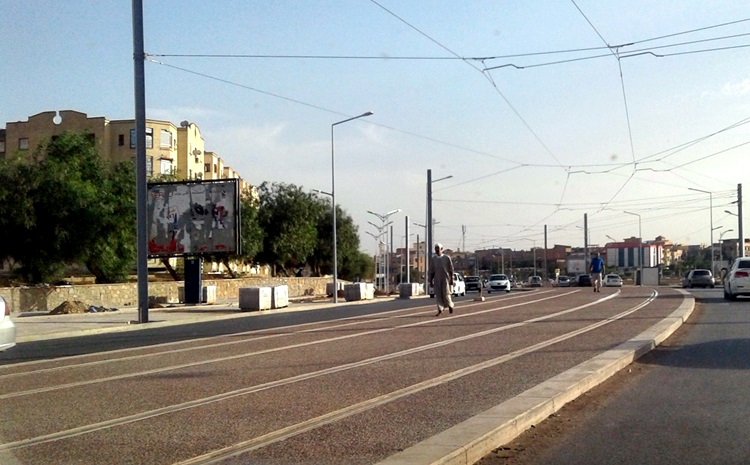Lists of countries that started and completed their Rail Mass Transit after Lagos Rail
Nigeria with a population of 180 million people with diverse tongues, cultures, and languages. Nigeria is blessed with intelligent, smart, mobile and creative people, this can be seen all over the world as in the case of research, analysis, medicine, peacekeeping, we are a force to reckon with. As good as this attributes are to us, we seem to lag behind in terms of growth, and what it takes to keep up. Its no doubt that the government as an institution is trying its best for growth and also by creating a conducive atmosphere for investors to invest in. One of this the Lagos Blue Rail Transit.
The Lagos Rail Mass Transit is an urban rail system being developed and under construction in Lagos. The system is being managed by the Lagos Metropolitan Area Transport Authority (LAMATA) and is envisioned to consist eventually of seven lines. The railway equipment including electric power, signalling, rolling stock, and fare collection equipment will be provided by the private sector under a Concession Contract. LAMATA is responsible for policy direction, regulation, and infrastructure for the network.
The first section of the network, Phase I of the Blue Line, was originally planned to be completed in 2011. After many delays caused by funding shortfalls, the opening date was revised to 2018 but just recently, the Lagos state government has said the project will now be completed by 2022 so technically, The Lagos Rail Mass Transit will take 19 years to complete. According to reports from Lagos state government, a total of $600million has been spent so far and still counting now that the contract has been awarded to Alstom SA of France.
These are lists of African countries that started and completed their Light Rail Mass Transit after Lagos began its construction and they have completed it.
1. Ethiopia
Addis Ababa Light Rail is a light rail transportation system in Addis Ababa, Ethiopia. A 17-kilometre (11 mi) line running from the city centre to industrial areas in the south of the city opened on 20 September 2015, inaugurated by Prime Minister Hailemariam Desalegn. Service began on 9 November 2015 for the second line (west-east). The total length of both lines is 31.6 kilometres (19.6 mi), with 39 stations. Trains are expected to be able to reach maximum speeds of 70 km/h (43 mph).
The railway was contracted by the China Railway Group Limited. The Ethiopian Railways Corporation began construction of the double track electrified light rail transit project in December 2011 after securing funds from the Export-Import Bank of China.[10] Trial operations were begun on 1 February 2015, with several months of testing following that. It is operated by the Shenzhen Metro Group.
The final cost to build the railway was US$475m, with construction taking three years. The Addis Ababa Light Rail was originally to have a total of 41 stations on its two lines, and each train was planned to have a capacity to carry 286 passengers. This will enable the light rail transit to provide a transportation service to 15,000 passengers per hour per direction (PPHPD) and 60,000 in all four directions. The railway lines have their own dedicated power grid.
According to CREC, the system carried on average 113,500 daily passengers in January 2016 with 153,000 passengers as highest passenger load during a single day. Service frequency was 10 minutes during peak hours on both lines and 20 minutes during off-peak hours. On average there were 94 train rotations on the Blue line (3,177.2 vehicle-kilometer) and 93 rotations on the Green line (3,236.4 vehicle-kilometer).
Algeria
Alstom-manufactured Citadis trams have started commercial operations at Sidi Bel Abbes, a city located in the north-western part of Algeria.
The Government of Algeria's Minister of Transport and Public Works Abdelghani Zaalane inaugurated the new services in the presence of other officials.
Alstom was originally contracted to deliver 30 Citadis trams in December 2013.
Alstom Algeria president Henri Bussery said: “With Sidi Bel Abbes, we are pursuing our partnership with Algeria to provide its inhabitants with the most environmentally friendly, comfortable transport system in existence: the tram.
“To date, the cities of Algeria have ordered 128 Citadis tram units to meet the mobility needs of passengers.”
The trams will operate on a line measuring 14.3km and are capable of carrying 302 passengers.
The 44m-long Citadis trams feature seven modules, low floors, and 12 side doors to ensure comfortable passenger movement, even for commuters with reduced mobility.
Morrocco
The Rabat-Salé tramway (In French: Tramway de Rabat-Salé) is a tram system in the Moroccan agglomeration of Rabat and Salé cities which opened on 23 May 2011.
The network is 19.5 km (12.1 mi) long with 31 stops has two lines (1 and 2) with combined section and frequency interval 8 min in peak hours and has calculated ridership 172,000 passengers per day. It is operated by Transdev with Alstom Citadis articulated modern trams consisted of two 5-pieces parts. Lines uses special new Hassan II bridge over the Bou Regreg and passes near Rabat-Ville station and through a specially arranged aperture in medieval city's wall. Expansion of existing lines and two more lines (3 and 4) are under construction with opening scheduled for 2018. From the 1910s to 1930s an old steam and oil tram network existed in Rabat. It is operated under contract by Transdev.
Construction of the network began in February 2007, opening on 23 May 2011. In January 2017, a seven-kilometer extension
Labels: Africa, Lagos, Lagos Rail, News, Rail
























0 Comments:
Post a Comment
A comment doesn't cost a thing. Please drop a comment below to boost the writer's morale. Thank you
Subscribe to Post Comments [Atom]
<< Home